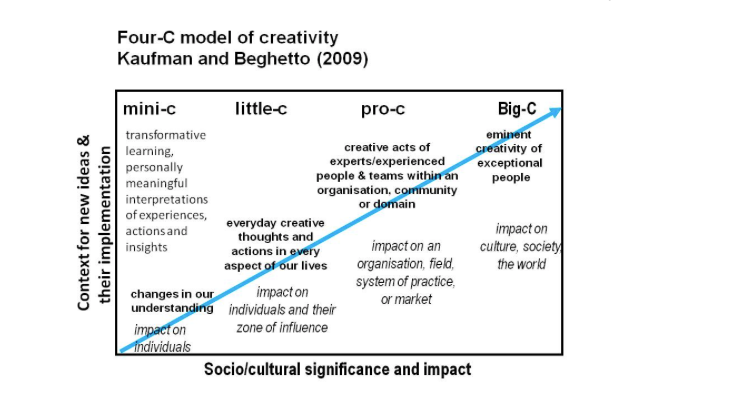Creativity Is Nothing But A Mind Set Free
By Inaan Budhiraja, Junior Strategist, FP7 McCann Dubai
Connecting the worlds of golf and advertising to illustrate how both fields require a very similar way of thinking, in order to achieve success.

To begin with, the two basic mindsets that shape our lives are a growth mindset and a fixed mindset.
Fixed mindset: A mindset that is static, tends to avoid challenges, and feels threatened by the success of others.
Growth mindset: A mindset that embraces challenges, persists in the face of setbacks, and sees effort as the path to mastery.
Many feel that success and high levels of achievement are pre-determined by the qualities in each individual at birth. But in fact, this is incorrect. There are multiple athletes, business figures, and politicians who have seen great success in their lives due to their growth mindset. A growth mindset provides people a greater sense of free will, and as a result, enables individuals to feel empowered to try something unheard off.
When people try something new, they tend to ask themselves, “Is it worth the risk?” This is a question the best of the best have asked themselves, whether it’s Tiger Woods and Phil Mickelson in the world of golf, or Harrison McCann and Alfred Erickson in the world of advertising.
All the people mentioned went through a similar thought process: “Would I be more satisfied with trying something new, that may give the world something it has never seen before? Or would I be happier with doing something done before and getting a result seen before?” They all did the former.
Golf is a sport and advertising is a means of communication, but they are both forms of art. The best players and advertisers have one thing in common. Creativity.
That being said, I’m not going to spend time explaining why creativity is integral in advertising, as we already know that. But what does it have to do with golf?
First, let’s take a look at the 4 unique stages of creativity:
Mini-C-creativity: Any time individuals attempt new tasks, there is a level of creativity involved. At the mini-c level of creativity, what someone creates might not be revolutionary but it is new and meaningful to them.
Little-C-creativity: Advancements are made and what was created might be of value to others, reflecting an aspect of growth from the level of mini-c-creativity.
Pro-C-creativity: This level consists of professionals who are skilled & creative in their respective fields but have not achieved eminence for their works.

Big-C-creativity: Ideas that are considered great and for the history books. This level of creativity leads to eminence & acclaim through unique breakthroughs, innovations, advancements & achievements.
Furthermore, in order to be highly creative, there are two unique components that are required to enhance creative performance:
Divergent thinking: The ability of individuals to develop original ideas and to envision multiple solutions to a given problem. It involves thinking “without boundaries” or “outside the box”.
Cognitive flexibility: The ability of an individual to restructure knowledge in multiple different ways depending on changing situational demands.
Based on this model, let’s assume that high achievers reach Big-C levels of creativity, and display divergent thinking and cognitive flexibility in their approaches. So how does it manifest itself among the greats?
Let’s tee off with golf examples again, starting with one of the greatest golfers of all time: Tiger Woods.
Some people call him an artist, and some people call him an engineer. He refers to his creative mind as his greatest weapon, and is known for being able to maneuver and spin the ball in different directions. This is something that is only possible when you let your mind completely free.
“My creative mind is my greatest weapon. It is a kind of inner-version that enables me to see things that others might not, like a certain way to play a shot. It is the game within the game. I developed my mental game early. I cannot overemphasize the importance of you developing yours now.”
-Tiger Woods
Next up, we have Phil Mickelson, who is one of the best short-distance players in the game of golf. What makes him unique is his untouched creativity around the putting green. Many professionals wouldn’t think of playing many of the shots that he has managed to pull off.
Have you ever seen any golfer face in one direction and hit the ball in the other? Watch one of Phil’s finest shots that truly brings to life his creativity on the golf course.
If these two examples aren’t exciting enough for you, take a look at what Bubba Watson did, on his final shot in order to win the most prestigious golf tournament – the Masters. He had a television tower, a magnolia tree and a carolina cherry tree between where his ball was and the flag. Nevertheless, this didn’t stop him as he took on the challenge in the moment, and overcame his problem with a creative solution to achieve the desired outcome.
In all golfing scenarios, we see how creativity led to greatness. This creativity would have come as a result of their growth mindset in their earlier days, and their willingness to take on those challenges. These moments of brilliance, are a result of learnings and creativity displayed over time (from mini-C to big-C). By continually testing new solutions to problems, these great players had a better understanding of possibilities and how they could flex it. In moments like these, their creativity flourished, and outcomes were achieved.
So, the key thing to remember is… to play golf! But in case that’s never going to happen, you can at least think of golf.
Whenever you feel like you’re stuck and can’t find a solution, just remember that GOLF is the secret to most of my solutions.
(G)ROWTH MINDSET.
(O)WN COGNITIVE FLEXIBILITY.
(L)EVERAGE DIVERGENT THINKING
(F)OCUS ON BIG-C-CREATIVITY.
Although the tools in advertising and golf might be different, the ability of each individual to think and be creative comes from within.
As a last note, I’d like to leave you with a quote said by the first ever golf Grand Slam winner (all four major tournaments in a year). He sums up the requirements for success in golf, and what I believe extend to life in general are:
“Golf is a game that is played on a five-inch course – the distance between your ears.”
– Bobby Jones
So, go ahead, free your mind!
Sources:
Attitudes and social cognition: Journal of Personality and Social Psychology, 2012.
Walden University: Four C model of creativity
Kaufman and Beghetto: Four C model of creativity, 2009.





